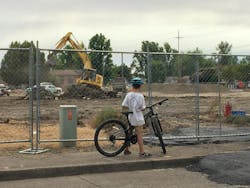A Career in Construction? The Future of Traditional Skilled Labor
They tore down an elementary school in my neighborhood this summer, replaced by a shiny, new (and far larger) school behind it. Since the old school occupied a busy corner, the entire demolition process was on full display for several weeks.
Driving by one day, I spotted a kid who had stopped to watch workers move the rubble. As a construction geek since childhood, I could relate to the allure of bulldozers, front-end loaders, and excavators in action.
But as a journalist who has written or edited countless articles about construction’s chronic skilled labor shortage—at last count, a deficit of 321,000 workers—I also wondered if that kid’s fascination at 10 years old might lead to a career in the trades as an adult.
RELATED
- HorizonTV: Inside Construction's Skilled Labor Shortage
- NAHB Chairman's Message: A Toolkit to Combat the Labor Shortage
- HorizonTV: Solving Your Trade Shortage: 12 Things That Really Work
Sadly, it probably won’t … at least if the 50-plus comments we received about “Inside Construction’s Skilled Labor Shortage,” a recent HorizonTV segment in which I interviewed the National Association of Home Builders’ chief economist Robert Dietz and Home Builders Institute president Ed Brady, are any indication.
I’ll spare you the colorful language and boil down the general sentiment to this: The pay, benefits, and job security is lousy; apprentices start in the deep end without much training or mentorship; working conditions are physically demanding, mentally stressful, and occasionally dangerous; and those at the top aren’t listening, watching, or prone to change … despite being desperate for labor.
“I was a carpenter for 15 years. I noticed then there was a wage shortage. The labor shortage followed that,” wrote one viewer. “Nobody wants to become a carpenter when you’re only getting 20 bucks an hour and no benefits.”
Many Voices Needed to Boost Construction Careers
In the video, Dietz and Brady acknowledge that housing lags behind other industries in terms of compensation—especially benefits—while recent Pro Builder data indicate builders are increasingly using better pay, benefits, and working conditions to try to reduce turnover and attract new workers.
But getting this kid and others to work in our industry will, I think, require a national, high-profile, public-private campaign among all stakeholders to encourage and enable careers in construction as a viable—even preferred—alternative to college-for-all and tech-focused policies and financial incentives that drowned high school and adult vocational training in their wake. NAHB’s Careers in Construction toolkit is a good start, but only one of many voices needed.
That, or we stop and watch from the sidelines as the skilled labor pool continues to drain away ... and then let the robots take over.

